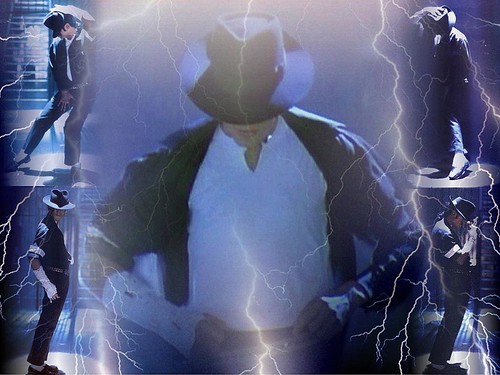Steve Huey of Allmusic observed how Jackson transformed the music video into an art form and a promotional tool through complex story lines, dance routines, special effects and famous cameo appearances; simultaneously breaking down racial barriers. According to director Vincent Paterson, who collaborated with the singer on several music videos, Jackson conceptualized many of the darker, bleak themes in his filmography.
Before Thriller, Jackson struggled to receive coverage on MTV because he was African American. Pressure from CBS Records persuaded MTV to start showing "Billie Jean" and later "Beat It", leading to a lengthy partnership with Jackson, also helping other black music artists gain recognition. The popularity of his videos on MTV helped to put the relatively young channel "on the map"; MTV's focus shifted in favor of pop and R&B. Short films like Thriller largely remained unique to Jackson, while the group dance sequence in "Beat It" has frequently been imitated. The choreography in Thriller has become a part of global pop culture, replicated everywhere from Bollywood to prisons in the Philippines.[188] The Thriller short film marked an increase in scale for music videos, and has been named the most successful music video ever by the Guinness World Records.
In the 18-minute music video for "Bad"—directed by Martin Scorsese—Jackson began using sexual imagery and choreography not previously seen in his work. He occasionally grabbed or touched his chest, torso and crotch. While he has described this as "choreography," it garnered a mixed reception from both fans and critics; Time magazine described it as "infamous". The video also featured Wesley Snipes; Jackson's videos would often feature famous cameos roles in the future. For "Smooth Criminal", Jackson experimented with an innovative "anti-gravity lean" in his performances, for which he was granted US Patent No. 5,255,452. Although the music video for "Leave Me Alone" was not officially released in the US, in 1989, it was nominated for four Billboard Music Video Awards, winning three; the same year it won a Golden Lion Award for the quality of the special effects used in its production. In 1990, "Leave Me Alone" won a Grammy for Best Music Video, Short Form.
The MTV Video Vanguard Artist of the Decade Award was given to Jackson to celebrate his accomplishments in the art form in the 1980s; the following year the award was renamed in his honor. "Black or White" was accompanied by a controversial music video, which, on November 14, 1991, simultaneously premiered in 27 countries with an estimated audience of 500 million people, the largest viewing ever for a music video. It featured scenes construed as having a sexual nature as well as depictions of violence. The offending scenes in the final half of the 14-minute version were edited out to prevent the video from being banned, and Jackson apologized. Along with Jackson, it featured Macaulay Culkin, Peggy Lipton andGeorge Wendt. It helped usher in morphing as an important technology in music videos.
"Remember the Time" was an elaborate production, and became one of his longest videos at over nine minutes. Set in ancient Egypt, it featured groundbreaking visual effects and appearances by Eddie Murphy, Iman and Magic Johnson, along with a distinct complex dance routine.[193] The video for "In the Closet" was Jackson's most sexually provocative piece to date. It featured supermodel Naomi Campbell in a courtship dance with Jackson. The video was banned in South Africa because of its imagery.
The music video for "Scream", directed by Mark Romanek and production designer Tom Foden, is one of Jackson's most critically acclaimed. In 1995, it gained 11 MTV Video Music Award Nominations—more than any other music video—and won "Best Dance Video", "Best Choreography", and "Best Art Direction".[194] The song and its accompanying video are a response to the backlash Jackson received from the media after being accused of child molestation in 1993. A year later, it won a Grammy for Best Music Video, Short Form; shortly afterwards Guinness World Records listed it as the most expensive music video ever made at a cost of $7 million.
"Earth Song" was accompanied by an expensive and well-received music video that gained a Grammy nomination for Best Music Video, Short Form in 1997. The video had an environmental theme, showing images of animal cruelty, deforestation, pollution and war. Using special effects, time is reversed so that life returns, war ends and the forests re-grow.[99][197] Released in 1997 and premiering at the 1996 Cannes Film Festival, Ghosts was a short film written by Jackson and Stephen King and directed by Stan Winston. The video for Ghosts is over 38 minutes long and holds the Guinness World Record as the world's longest music video.















No hay comentarios:
Publicar un comentario